Hibiscus Lifespan – How Long Is It?
Hardy hibiscus varieties can live for up to 15-20 years with good care but perennial hibiscus live for a good 10 years or less.
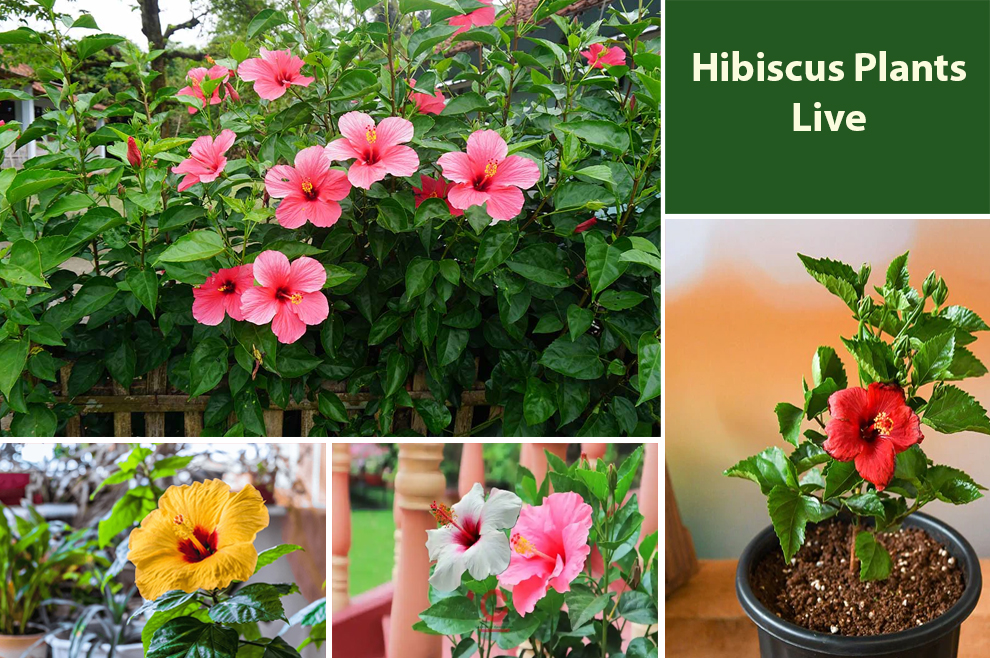
Hibiscus plants are famous for their stunning flowers in various sizes and colors. Depending on the growing conditions and species, you can grow them as perennials or annuals.
Knowing how long do hibiscus plants live will help you understand whether your plant has lived its full life or is it wilting due to some underlying problem.
Ideally, the lifespan of these plants varies depending on the growing conditions and species.
Hardy hibiscus or swamp mallow/rose mallow are known for their longevity. They can live for up to twenty years if they get the proper care.
On the contrary, the perennial hibiscus or the dinner-plate hibiscus have a relatively shorter lifespan. They live for five to ten years.
Hibiscus Lifespan – How Long Do These Trees Live?
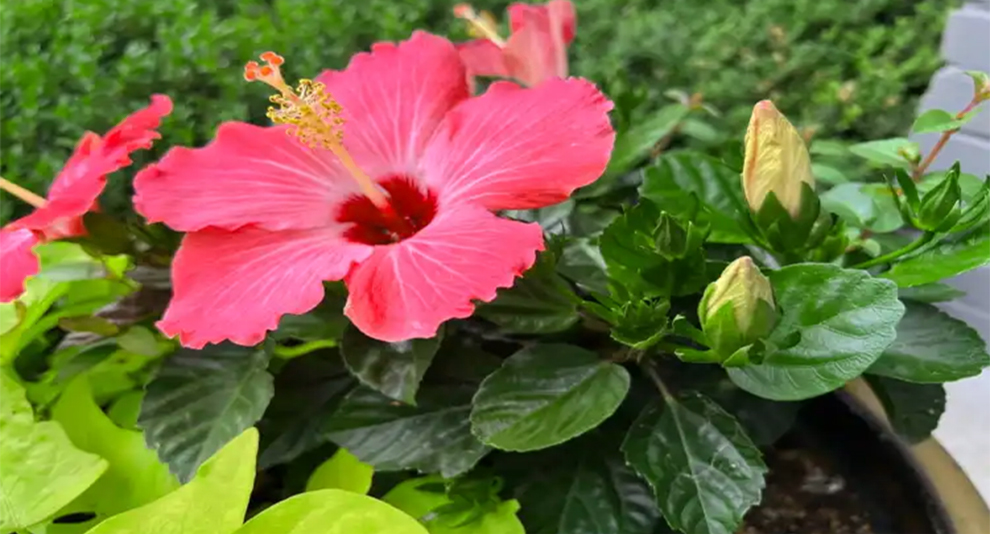
Ideally, being a flowering plant hibiscus live long if they get the necessary care. But in reality, their lifespan depends on factors such as the growing conditions, the specie planted, and hibiscus care.
Typically, hardy hibiscus can live for several years, with some species surviving for two decades or more. These plants will survive even in colder regions and withstand temperatures as low as -30 degrees Fahrenheit. However, pests, diseases, and soil quality can affect how long do hibiscus live that are hardy type.
The perennial hibiscus, or the tropical hibiscus, has a shorter lifespan than the hardy hibiscus. These plants live for five to ten years. Perennial hibiscus plants demand warmer temperatures and do not survive in colder climates.
Is Hibiscus Hard To Keep Alive?

Once you plant Hibiscus, these plants are easy to care for, provided you cater to their basic needs. Here are some factors to consider if you do not want the hibiscus lifespan to be cut short:
1. Watering: Hibiscus plants need consistent moisture. However, they are susceptible to root rot if you overwater them. Thus, it is crucial to water the plants regularly but simultaneously let the soil between waterings dry out slightly before you water again.
2. Light: Hibiscus plants need ample sunlight to thrive. However, they can be sensitive to intense, direct sun. Thus, you must keep them in a spot that receives at least six hours of sun daily. However, move them to shade during the hottest parts of the day. Excessive sun can also cease the hibiscus plant’s lifespan by burning the leaves.
3. Soil
Hibiscus plants thrive in well-draining soil rich in nutrients. It helps to grow the plant in soil with a mix of perlite, sand, and peat moss.
4. Fertilizer
Hibiscus plants seek regular feeding, especially during the growing season. It promotes healthy growth and blooms. You should provide the plants with balanced plant food with equal parts of potassium, phosphorous, and nitrogen applied every four to six weeks during the growing season.
5. Diseases and pests: Hibiscus gets affected due to pests and diseases. These include mealybugs, spider mites, fungal infections, and aphids. Regular treatment and inspection can help avoid these issues from causing damage to the plants.
Why Is My Hibiscus Tree Dying – What Affects Its Lifespan?
We have already discussed how long do hibiscus plants live. However, in some conditions, they may not live their whole life, and their life might end because of unforeseen circumstances. It may be because of one of the following reasons:
1. Soil issues: Poor soil quality or excessively compacted soil may lead to drainage problems, resulting in root rot or plant death.
2. Lack of water: Hibiscus plants need consistent moisture to thrive. But if you do not water the tree adequately or let the soil dry out completely, the tree may wilt and eventually die.
3. Pests and diseases
Hibiscus plants are susceptible to diseases and pests. Some common pests like aphids, mealybugs, or spider mites can attack the plant. Leaf spot and root rot diseases may also infect hibiscus. If left untreated, these issues might kill the plant.
4. Improper pruning: Hibiscus plants need regular pruning to maintain their shape and promote healthy growth. However, improper pruning might damage and make them susceptible to diseases and pests.
5. Harsh temperatures: Hibiscus plants are sensitive to extreme climates – both hot and cold. Thus, exposing the tree to a temperature beyond its preferred range for a prolonged duration may stress and eventually kill the plant.
Related: Indoor Hibiscus Plant Care
How Can I Tell If My Hibiscus Tree Is Still Alive?
As a hibiscus plant owner, if you notice that your plant isn’t flowering, you may wonder from time to time whether your plant is still alive or not.
Some days, it might seem they are not growing, or the leaves may turn brown or yellow.
On a few other days, the plant might lose all its leaves, and you may be unsure if it is dormant or dead. But here are some ways to tell that the Hibiscus plant lifespan is still not complete:
1. Check the stems
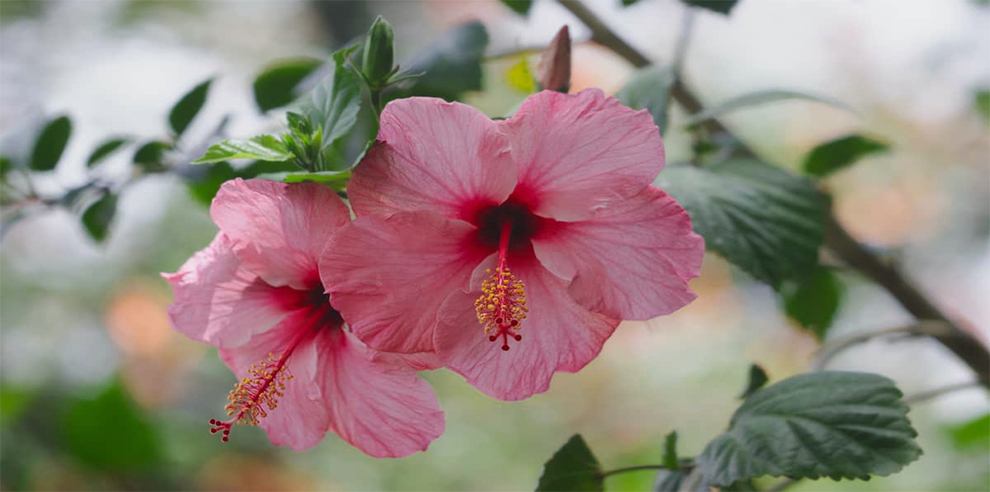
The hibiscus tree stem can give you a precise idea of whether the plant is still alive. You can begin by scratching the bark of the stem with a fingernail. If you see the green tissue under the bark, it is a sign of life.
However, the stem is probably dead if it looks dry and brown. You can also try twisting the stem slightly. It is a sign of life if it is pliable and bends easily. However, the stem is dead if it is stiff and snaps easily.
2. Look for new growth: New growth is the clearest sign that a hibiscus tree is still alive. So, inspect the branches and stems for signs of fresh leaves, shoots, or buds.
If you spot any of these, the plant is alive and is only going through a dormant phase.
3. Examine the roots: The roots of the hibiscus tree can also tell you whether the plant is still alive. So, carefully dig a small section of the soil around the plant’s base and inspect the roots.
The healthy roots will be firm and very light brown. It is a sign of root rot if the roots feel dark brown or mushy. Root rot can kill the plant. Further, the plant is either dying or dead if the roots have a foul smell.
4. Test the soil
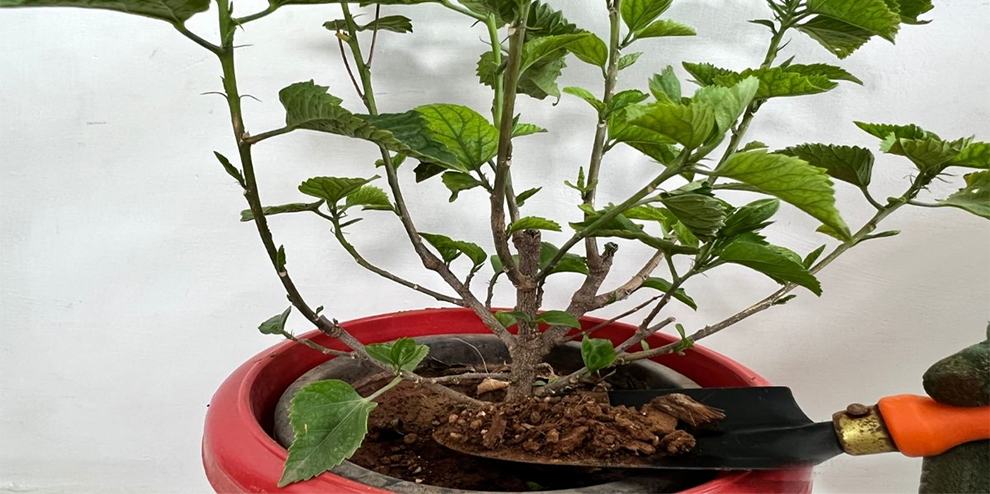
The soil around the hibiscus plant can also tell whether the plant is still alive. You can use a moisture meter to inspect the soil moisture level.
Hibiscus plant needs consistent moisture. However, they may be prone to root rot if you overwater them. So if the soil is too dry or too wet, it is a sign that the plant is struggling.
5. Inspect the leaves: The hibiscus plant’ leaves can also give you a clue about the plant’s health. The plant is not getting adequate water or nutrients if the leaves are brown or yellow.
Further, if the leaves are dropping off, the plant is undergoing a dormant period or is under stress. But if the leaves are green and healthy, it is a sign of a living plant.
6. Look for signs of disease or pests: Hibiscus plants are susceptible to diseases and pests, which can affect the hibiscus lifespan and health. So, examine the stem and the leaves for signs of pests like aphids, spider mites, or mealybugs.
Check for lesions or discolored spots on the stem or leaves, which may hint at bacterial or fungal infection. These issues can kill the plant.
7. Look for buds
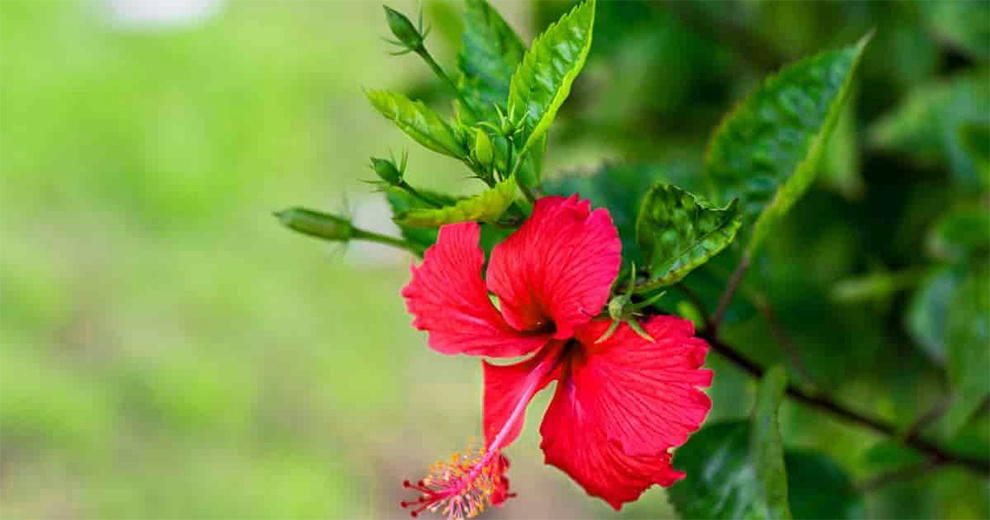
If the buds of the hibiscus tree have not opened yet, it is a sign that the plant is still alive and might only be experiencing a dormancy phase.
You can encourage it to bloom by offering it the correct care and growing conditions.
With these steps above, you can understand the hibiscus tree’s health and learn whether the plant is alive.
If you suspect the plant is dead, it is best to remove it from your garden and replace it with a new one.
The Lifespan Of A Hibiscus Flower – How Long Does It Bloom?
The lifespan of the hibiscus flower can vary depending on the growing conditions and the specie grown. Typically, the hibiscus flowers bloom for a day or two, but some species may bloom for up to six days.
After the flower fades and drops off, the hibiscus flower will continue to yield new flowers for several weeks or months, depending on the growing conditions and the variety planted.
It is crucial to note that hibiscus plant varieties desire regular watering, plant food, and pruning to promote healthy growth and blooming.
You can elongate how long do hibiscus trees live with proper care, and with the right growing conditions they will continue to yield flowers across the growing season.
